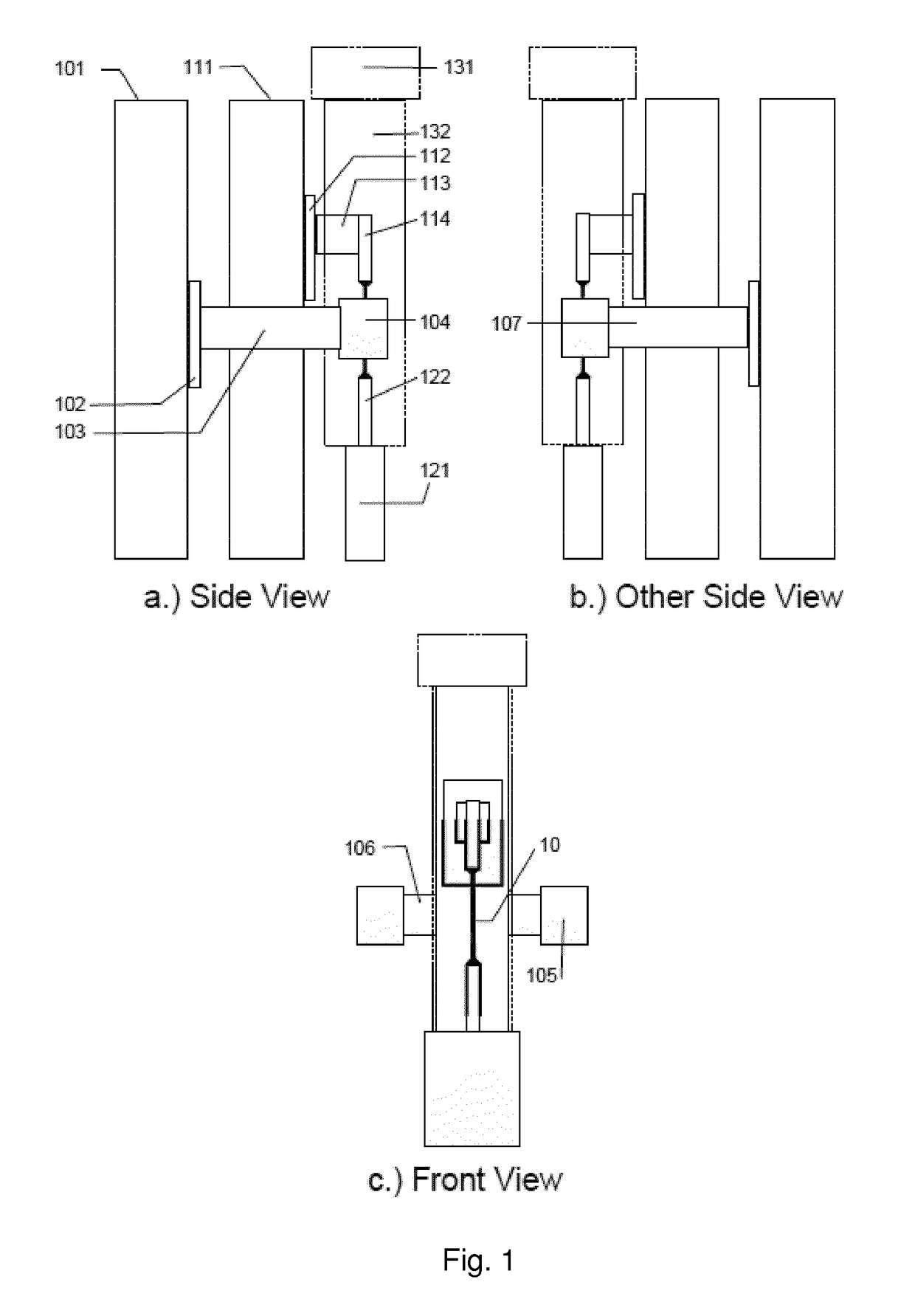Scanning rheometer
a rheometer and scanning technology, applied in the field of rheology, can solve the problems of few commercially available instruments for the measurement of extensional properties, difficult design of apparatuses to strictly measure extensional properties, and poor understanding of the response of materials in such flow fields, and achieve the effect of accurate and reliable measurement, accurate measurement, and fast determination of the minimum diameter
- Summary
- Abstract
- Description
- Claims
- Application Information
AI Technical Summary
Benefits of technology
Problems solved by technology
Method used
Image
Examples
Embodiment Construction
[0033]The present disclosure relates to a filament stretching rheometer for measuring rheological and / or mechanical properties of a sample.
[0034]Referring to FIG. 1, there is a motor 101 with a moving plate 102 connected to a light source 104 and a detector 105 via arms 103 and 107 and crossbar connector 106, a second motor 111 with a moving plate 112 connected to a top surface 114 via connector 113, a bottom surface 122 connected to a force / pressure transducer 121, and a housing 132 that surround the top surface 114, bottom surface 122 and sample 10 and controls environmental conditions of sample via controller 131.
Opposed Surfaces
[0035]The two opposed surfaces, top 114 and bottom 122, create opposed surfaces, for which the sample 10 is suspended. The opposing surfaces may be surfaces on a pair of opposed plates or rods and be constructed of any material. Furthermore, the material comprising the surfaces may be roughened, polished, or chemically coated to promote adhesion of the sa...
PUM
| Property | Measurement | Unit |
|---|---|---|
| temperature | aaaaa | aaaaa |
| melting temperature | aaaaa | aaaaa |
| glass transition temperature | aaaaa | aaaaa |
Abstract
Description
Claims
Application Information
 Login to View More
Login to View More - R&D
- Intellectual Property
- Life Sciences
- Materials
- Tech Scout
- Unparalleled Data Quality
- Higher Quality Content
- 60% Fewer Hallucinations
Browse by: Latest US Patents, China's latest patents, Technical Efficacy Thesaurus, Application Domain, Technology Topic, Popular Technical Reports.
© 2025 PatSnap. All rights reserved.Legal|Privacy policy|Modern Slavery Act Transparency Statement|Sitemap|About US| Contact US: help@patsnap.com



